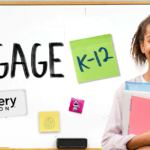By Cheryl Spittler
“The one argument for accessibility that doesn’t get made nearly often enough is how extraordinarily better it makes some people’s lives. How many opportunities do we have to dramatically improve people’s lives just by doing our job a little better?” ― Steve Krug
In 1965, President Lyndon B. Johnson enacted the Elementary and Secondary Education Act (ESEA) as an approach to the “War on Poverty” (McLaughlin, 1975). This law created a landmark commitment to equal access to quality education and has evolved into what we know today as the Every Student Succeeds Act of 2015. Other legislation influencing education include: P.L. 94-142 Education of the Handicapped Act 1975 and Individuals with Disabilities Education Act (IDEA). IDEA was developed from P.L. 94-142 and expanded special education to include services for infants, young children, students on the autism spectrum and individuals with traumatic brain injury. Another product of IDEA is access to a Free and Appropriate Public Education (FAPE). FAPE mandates schools to include special education students in general education classrooms as much as possible. So with this in mind, alongside the imperative need to have education accessible, compliant and equitable how do we create cultures that fuel a cycle of continual improvement regarding these critical components?
As educators, we are great at using educational jargon but we don’t always know what it looks like in action, for example, the idea of accessibility, compliance and equity. We know access indicates allowing someone the same opportunity or experience as others. The Office for Civil Rights with the U.S. Department of Education explains accessibility as “when a person with a disability is afforded the opportunity to acquire the same information, engage in the same interactions, and enjoy the same services as a person without a disability in an equally integrated and equally effective manner, with substantially equivalent ease of use”. Compliance involves the following of legal requirements, the following of rules while equity in education addresses fairness and inclusion. Fairness addresses the need for making sure that personal and social circumstances are not an obstacle to achieving educational potential. Inclusion on the other hand involves ensuring a basic minimum standard of education for all students.
What do these three components look like in action? How does your school culture and climate create or destroy these vital components? In order to dig deeper into the application of accessibility, compliance and equity in education we need to reflect on the current culture and climate of our schools.
According to the National School Climate Center (NSCC), “school climate reform supports K-12 students, school personnel, parents/guardians and community members learning and working together to promote pro-social education.” Effective school climate reform creates cultures of accessibility, compliance and equity by designing environments that are safe, supportive and engaging. School climate reform also increases student achievement, enhances school connectedness, lowering high school dropout rates, prevents bullying as well as other forms of violence, and improves teacher retention rates. The culture of a school refers to the values, beliefs and norms of a school and the climate is the byproduct of the culture. Taking time to reflect on current values and beliefs needs to begin with an examination of the current systems in order to establish a baseline for improvement.
The four areas of climate to examine include: teaching and learning, safety, interpersonal relationships, and the institutional environment. Each of these areas requires a close look at current practices. According to the Alliance for Excellent Education, teaching quality is recognized as the most powerful school-based factor in student learning. There is an unyielding need to improve teaching and learning quality to provide accessible and equitable opportunities in our classrooms. Tips for improving teaching and learning in a school include:
- Build collective capacity for strong collaborative structures including mentor teachers, common planning times, and high functioning professional learning communities.
- Focus on core instructional strategies while implementing teaming strategies for rigor.
- Plan systems for supportive communication with a principal or department chair.
- Implement a quality induction program and provide continual focused professional development.
The level of safety in our schools is a second critical component in providing accessible and equitable education. School safety is a never-ending process and involves four phases: prevention and mitigation, preparedness, response, and recovery. According to Gary Sigrist of Safeguard Risk Solutions, there are five levels to school safety which include: emergency management, staff training, exercises, hardware/software, and positive school culture. Positive school culture is the most important and least expensive layer of school safety. A positive school culture creates an environment where every student has the opportunity to connect with at least one significant adult at school. Approaches to bolster school safety include:
- Assess your school climate to identify areas of focus (bullying, harassment, behavior management, student behaviors, etc). https://www.schoolclimate.org/research
- Survey students to determine how connected they feel to school, how much bullying is taking place and if they feel safe in their schools. DO NOT LET THIS DATA SIT IDLE!!
- Provide training for teachers on how to intervene with bullying to provide consequences for the bully and support the victim.
- Incorporate digital citizenship education in elementary school and revisit every year thereafter.
The third area of school culture needing attention to foster accessible and equitable education is that of interpersonal relationships the way in which people in the building treat each other. As adults in the building we need to seriously consider our conversations in the hallways, staff lounge and in the classroom. Students have great “B.S.” detectors and they pick up our attitudes, actions and behaviors. Get to know your students….all of them. While this may seem overwhelming, I would recommend the 2 x10 approach to building relationships (see tip below). Here are a few additional suggestions:
- Greet your students at the door with a high-five, hand-shake, or some other method of greeting as a part of your daily routine.
- Have a positive presence and practice “coffee cup” diplomacy. Get out of your office/classroom in the morning and greet students with hello!
- Practice the 2×10 strategy where you talk to two students for 2 minutes ten days in a row (http://www.ascd.org/publications/newsletters/education_update/jul14/vol56/num07/The_Two-Minute_Relationship_Builder.aspx).
The final piece of a positive school culture is that of the environment of the institution itself. What is the appearance and feel of your building? Your classroom? Do the adults in the building pick up trash from the floor when they see it? Years ago there was a Head and Shoulders dandruff shampoo commercial that stated “you never get a second chance to make a first impression”. This is very true in relationships as well in our buildings. In 1982, James Q. Wilson and George Kelling proposed an academic theory called “broken windows theory”. Wilson and Kelling used broken windows as a metaphor for disorder within neighborhoods. The most frequent example used to communicate the broken window theory is a building with a few broken windows. If the windows are not repaired, the tendency is for vandals to break more windows. If our hallways have small pockets of litter or vandalism that are not taken care of then more vandalism and littering will occur. As the adults in the building we need to model respect for our own institution and encourage others around us to do the same.
Accessibility, compliance and equity are substantial issues in education. In order to have educational environments with optimal opportunities for accessibility, compliance and equity, we need to begin at the root of the experience; a positive culture which yields a positive climate. This work will require deep reflection and implementation of second order change. Our student population will continue to evolve; will our schools evolve with them? Or will we strive to exceed expectations for the good of our students…our future?
The American Consortium for Equity in Education, publisher of the "Equity & Access" journal, celebrates and connects the educators, associations, community partners and industry leaders who are working to solve problems and create a more equitable environment for historically underserved pre K-12 students throughout the United States.
- American Consortium for Equity in Educationhttps://ace-ed.org/author/admin/
- American Consortium for Equity in Educationhttps://ace-ed.org/author/admin/April 23, 2025
- American Consortium for Equity in Educationhttps://ace-ed.org/author/admin/
- American Consortium for Equity in Educationhttps://ace-ed.org/author/admin/







